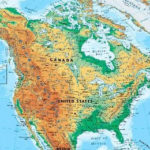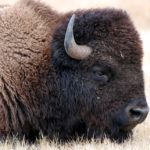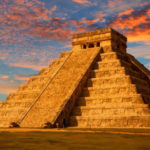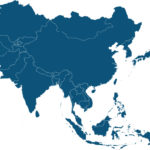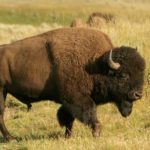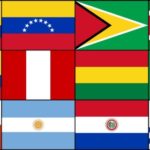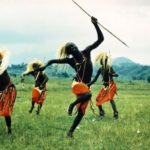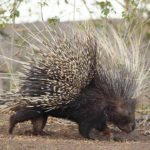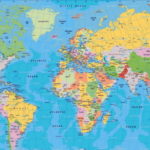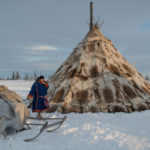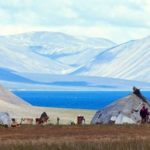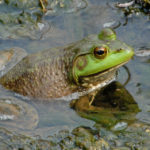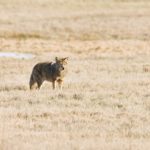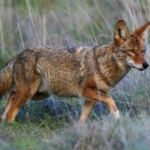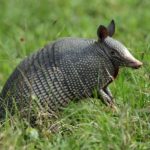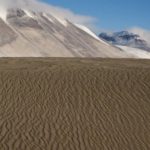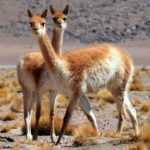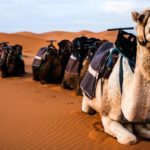Indigenous peoples of North America
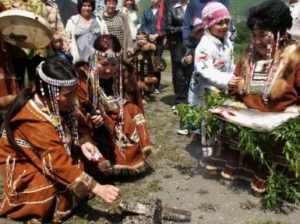 The whole history of America is somehow connected with the indigenous peoples who inhabited the American continent before the Europeans got there. As a result of numerous investigations by archaeologists, it became known that the first people on the American continent appeared 25-29 thousand years ago. And scientists, anthropologists who conducted research in this field, believe that people of Mongoloid type, natives of Asia, lived in North America at that time.
The whole history of America is somehow connected with the indigenous peoples who inhabited the American continent before the Europeans got there. As a result of numerous investigations by archaeologists, it became known that the first people on the American continent appeared 25-29 thousand years ago. And scientists, anthropologists who conducted research in this field, believe that people of Mongoloid type, natives of Asia, lived in North America at that time.
This is confirmed by the peculiarity of certain blood groups, the structure of the skeleton, the shape of the teeth and the genetic features that make people of this type of men do not bald in old age, and women do not grow gray.
The first Americans people were strong and resilient. In these harsh lands, they were able to create conditions for themselves, under which they could not only survive but also multiply, eventually settling in almost the entire continent. They built houses, made clothes, created tools for hunting and labor, hunted animals, birds and sea animals, grew edible plants.
Over the centuries, due to the specificity of the conditions inhabited by individual tribes; three major groups emerged: the Eskimos who occupied the northern regions, the Aleuts who lived on the coast and the islands, and the Indians who settled in the central regions of North America. In turn, as the number increased, these groups were divided into separate tribes, many of which have survived to this day. They have formed their own languages, customs and traditions.
In this small review we will try to consecrate the basic customs of the indigenous peoples of the far north of America.
The American Eskimos still reside in the American Arctic, which stretches from Greenland to the Bering Strait. The Eskimos have a peculiar appearance: short stature, yellow skin, narrow eyes, black, hard, straight hair. The most common languages spoken by Eskimos are Yupik, Inupiaq, and Inuktikut. For many years, the main trade of the Eskimos was hunting for whales, walruses, and seals. In the summer, the Eskimos hunt deer and waterfowl. Women harvest sorrel, berries and various mosses. On their little boats, kayaks and Umiaks, using the usual harpoon, the brave Eskimo hunters went out into the open sea, slaughtered these huge animals and towed them to the shore, where later the whole tribe cut up the whale’s carcass and stored up its meat and fat for the whole long Arctic winter.
The traditional dwelling of the Eskimo yaranga is a construction of poles covered with skins or covered with bark. For the winter, the Eskimos built more warmed dwellings, the so-called igloo — dome-shaped buildings, necessarily from hides, but warmed with snow or ice blocks outside.
The clothes of the Eskimos are also adapted to the cold climate of the north. Summer clothes of one layer of fur, winter of two layers, the inner layer of fur inside, the top – fur outside. An ordinary outfit is a short deer skin kitchenette with a hood.
In addition to hunting, the Eskimos are now mostly engaged in reindeer herding.
A rare craft is common among the Eskimos – walrus tusk carving. Their amazing crafts and all kinds of sculptures of people and animals are known throughout the world. Figures depicting Eskimo spirits, the Eskimos wear as talismans.
The Aleuts are an island people living on the islands of the Aleutian Archipelago. In practice, this is a disappearing nation. Now there are not many more than 4 thousand people. Although in the middle of the XVIII century, their number was about 15 thousand
The islands of the Aleutian archipelago practically do not freeze the sea, and therefore for many years there were no particular problems for the Aleuts to get food for themselves. They hunted seals, fur seals, sea otters, dolphins, ducks, geese. In the mouths of small rivers, they caught salmon fish, halibut, cod. In these places, an abundance of fish and birds.
Combining in groups of 15-20 people, sometimes they went hunting for whales. Thanks to the small boats they invented, the kayaks made in the form of a wooden frame, sealed with whalebone and sea-covered with sea lions, they boldly went out to sea even with a strong wave. The whale was hunted with a harpoon, the tip of which was smeared with aconite poison. After a successful throw, after a couple of days the dead whale waves were thrown onto the shore. And the Aleuts proceeded to its cutting, harvesting meat and fat for the future. They also used bows and arrows, and later, guns.
Leather boat-kayak is a true art of Aleut engineering. The stem, forked vertically, when sliding on the water, cuts; side wave, protecting the kayak from damage, and the keel plank allows the body of the kayak to bend on the waves. Such boats are used in our time. The rower, sitting in a kayak, puts on a wide belt, the upper edge of which is pulled over the chest, and the other – on top of the hay of the kayak and the water cannot get inside, even if the boat turns over. With any strong wave, it will not sink and it is easy to turn it to its original position.
